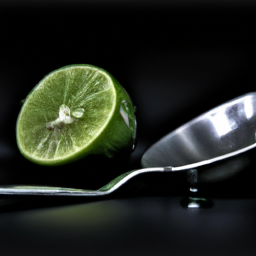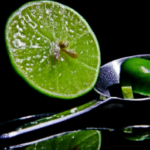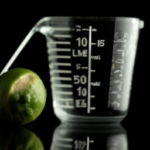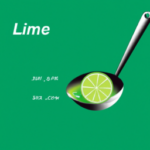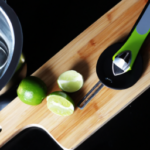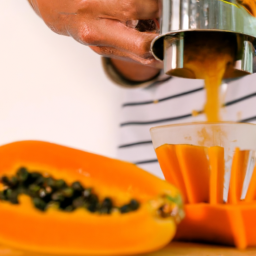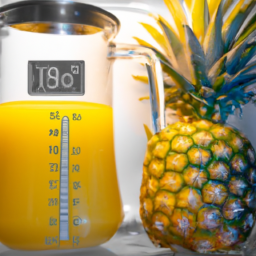**Are you a fan of both cooking and baking? Have you ever wondered how much juice you can get from just one lime? Knowing the exact amount of juice a lime holds is crucial for specific recipes that require precise measurements. Keep reading to discover the secret to extracting the maximum juice from a single lime and elevate your culinary creations to the next level!**
Additionally, understanding how to properly extract the juice from a lime and how to store it can also be incredibly useful in the kitchen.
In this article, I will explore the topic of how much juice is in one lime. I will discuss the factors that can affect the amount of juice a lime contains, as well as the tools and techniques needed to accurately measure the juice.
I will also offer tips for maximizing juice extraction and ideas for using lime juice in delicious recipes. By the end of this article, you will have a comprehensive understanding of lime juice and how to best utilize it in your culinary creations.
Key Takeaways
- On average, one lime contains about 2 tablespoons of juice.
- Using handheld reamers can yield up to 20% more juice than using hands alone.
- Adding too little or too much lime juice can impact the overall flavor of a dish, so it’s important to measure the juice accurately.
- Lime juice can be stored in the refrigerator for up to a week or frozen for up to six months, and can be used in a variety of recipes.
The Importance of Measuring Lime Juice
You may not think it matters, but measuring your lime juice can make all the difference in your recipe’s taste – trust me! Measuring accuracy is crucial when it comes to lime juice because even a slight variance in the amount can impact the overall flavor of your dish.
For instance, if you add too little lime juice, your dish may taste flat or lack that tangy kick that lime juice provides. On the other hand, if you add too much lime juice, your dish may become too sour, overpowering all the other flavors.
The flavor impact of lime juice is significant, and precise measurement is necessary to achieve the perfect balance. Measuring the correct amount of lime juice can enhance the overall flavor profile of your dish, bringing out the burst of freshness and tanginess that lime juice provides.
Now that you understand the importance of measuring your lime juice, let’s move on to the factors that affect the amount of juice in a lime.
Factors Affecting the Amount of Juice in a Lime
When I’m squeezing limes for my recipes, I always consider three key factors that can affect the amount of juice I can extract from each fruit: the size of the lime, its ripeness, and its juiciness. The size of the lime can determine how much juice it can yield, as smaller limes may have less juice than larger ones.
The ripeness of the lime can also play a role, as riper limes tend to be juicier and easier to extract juice from. Finally, the juiciness of the lime varies depending on the variety and season, and can affect the overall flavor of the recipe.
Size of the Lime
Look at that lime – it’s so small, it’s like a tiny green pearl in your hand! The size of a lime can greatly affect the amount of juice it contains. Lime varieties come in different sizes, with some being smaller than others. Key limes, for example, are significantly smaller than the more common Persian limes. The smaller size of key limes means they have less juice, but their flavor profile is more intense and acidic, making them ideal for certain recipes like key lime pie.
In addition to the variety of lime, the ripeness of the fruit also plays a role in how much juice it contains. As a lime ripens, it becomes softer and more pliable, allowing for more juice to be extracted.
The next section will explore how the ripeness of a lime can affect the amount of juice it yields.
Ripeness of the Lime
The ripeness of a lime can heavily impact the flavor and intensity of your recipes, so it’s important to choose the right stage of ripeness. When a lime is too ripe, it can become mushy and bitter, while an unripe lime can be tart and lacking in juice.
It’s important to know when to use or discard a lime based on its ripeness. One way to determine lime ripeness is by its color. A ripe lime is a bright green color, while an unripe lime may have a hint of yellow or green. Another way to determine lime ripeness is by its texture. A ripe lime will have a slight give when gently squeezed, while an unripe lime will be hard and unyielding.
By using these methods to determine lime ripeness, you can ensure that your recipes have the optimal flavor and juiciness. As important as the ripeness of the lime is, the juiciness of the lime is equally crucial.
Juiciness of the Lime
Did you know that the acidity level of a lime can impact its juiciness, affecting the overall taste of your dish? Maximizing juiciness is important when using limes in cooking. It can be frustrating to squeeze multiple limes and only get a small amount of juice. Here are some things to keep in mind when looking for a juicy lime:
- Look for limes that are heavy for their size.
- Choose limes that have a smooth, shiny skin.
- Avoid limes with any signs of mold or decay.
- Opt for limes that have a slight give when gently squeezed.
- Consider using Mexican limes, also known as key limes, which tend to be more juicy than other varieties.
By keeping these tips in mind, you can ensure that you’re getting the most juice possible out of your limes. This can make all the difference in the flavor of your dish.
In the next section, we’ll discuss some tools that you can use to measure the amount of juice you’re getting from your limes.
Tools for Measuring Lime Juice
When it comes to measuring lime juice, there are a few tools that can be used. Personally, I’ve found that juicers are the most efficient and consistent method for extracting lime juice.
Handheld reamers are also a popular tool, but they can require more effort and may not extract all of the juice.
For those without a juicer or reamer, the fork and bowl method can also work, but it can be messy and time-consuming.
Juicers
Juicers can be a great investment if you enjoy making fresh juice from citrus fruits like limes. There are different types of juicers available in the market, each designed for different juicing techniques.
Citrus juicers are specifically designed to extract juice from citrus fruits and are perfect for juicing limes. Citrus juicers come in both electric and manual options. Electric citrus juicers are convenient and easy to use, as they require minimal effort to extract juice. Manual citrus juicers, on the other hand, require a bit more effort, as they require squeezing the fruit by hand. However, they are inexpensive and easy to clean.
With a citrus juicer, you can extract more juice from a lime than you would be able to by hand. This means that you can get more juice for your recipes without having to use as many limes.
In the next section, we’ll discuss another tool that can be used to extract juice from limes: handheld reamers.
Handheld Reamers
Using handheld reamers is a simple and efficient way to extract lime juice. It’s a tool that can squeeze out more juice than just using your hands alone. Studies have shown that using a reamer can yield up to 20% more juice.
Handheld reamers come in different types, including wooden, plastic, and metal. Each type has its own unique features, but all of them are designed to make the juicing process easier and faster.
When using a handheld reamer, it’s important to clean it thoroughly after every use. You can wash it with soap and water or simply rinse it under running water. You can also use a small brush to remove any pulp or seeds that may be stuck in the reamer. It’s best to wash it right after using it to prevent the lime juice from drying and sticking to the reamer.
Speaking of juicing, another method you can use is the fork and bowl method.
Fork and Bowl Method
To get the most out of your limes, grab a fork and a bowl and try this simple trick. The fork and bowl method is an alternative way to extract juice from limes without using any specialized equipment.
Here are the pros and cons of this method:
-
Pros: It’s simple and requires minimal tools. It’s also effective at extracting most of the juice from the lime.
-
Cons: It can be messy and time-consuming if you need to juice a large quantity of limes. It also requires some physical effort to squeeze the lime with the fork.
If you prefer not to use the fork and bowl method, there are other alternative methods for juicing limes such as using a citrus press or a handheld reamer. These methods are quicker and more efficient, but they may require additional equipment and can be more expensive.
In the next section, we’ll provide a step-by-step guide for measuring lime juice.
Step-by-Step Guide for Measuring Lime Juice
First things first, let’s get real – squeezing lime juice out of one tiny lime can feel like trying to get blood from a stone. But fear not, there’s a step-by-step guide that can make the process much easier and help you measure the accurate amount of juice you need for your recipe.
To begin, roll the lime on a hard surface with the palm of your hand to loosen the juice. Then, cut the lime in half and use a citrus juicer or a fork to extract as much juice as possible. If you don’t have a juicer, you can also use a fork and a bowl to squeeze the lime over the bowl until you’ve extracted all the juice.
It’s important to measure the amount of juice accurately, as substitutes like bottled lime juice or lemon juice can alter the flavor of your dish.
Now that you know how to extract the juice, the question remains: how much juice is in one lime? Stay tuned to find out.
How Much Juice is in One Lime?
When you hold a fresh lime in your hand, you might wonder how much juice can be squeezed out of it. The amount of juice in a lime can vary, but on average, one lime contains about 2 tablespoons of juice. This measurement is important to know when cooking or making drinks that require lime juice, as measuring accuracy can greatly affect the outcome of the recipe.
Aside from its delicious taste, lime juice also has nutritional benefits. It’s a good source of vitamin C, which helps boost the immune system and promotes healthy skin. Additionally, it contains antioxidants that can help prevent cell damage and reduce inflammation in the body.
Knowing how much juice is in one lime can help you incorporate this nutritious fruit into your diet in a precise and accurate way.
To maximize the amount of juice extracted from a lime, there are a few tips to keep in mind. By rolling the lime on a hard surface before cutting it, you can break down some of the fibers and make it easier to extract the juice. Additionally, using a citrus juicer or reamer can help you get the most juice out of the lime.
With these techniques, you can ensure that you’re getting the most out of this flavorful and nutritious fruit.
Tips for Maximizing Juice Extraction
When it comes to maximizing juice extraction from a lime, there are a few tips that I’ve found to be extremely helpful.
Firstly, warming the lime in the microwave for a few seconds can help to soften the fruit and make it easier to squeeze.
Secondly, rolling the lime on a hard surface before cutting it can help to break down the fibers inside and release more juice.
Lastly, using a strainer to catch any pulp or seeds can ensure that the juice extracted is smooth and free from any unwanted bits.
Warming the Lime
You can easily give your lime a cozy little warm-up before squeezing out all its juicy goodness. Heating techniques can help break down the citric acid in the lime, making it easier to extract more juice.
One way to warm up your lime is to microwave it for about 10-15 seconds. Be sure to pierce the skin of the lime with a fork or knife before microwaving to avoid any explosive surprises.
Another way to warm up your lime is to roll it on a hard surface with the palm of your hand, applying firm pressure. This helps to break down the pulp and release more juice. Rolling the lime before cutting it open can also make it easier to extract the juice.
By using this warming technique, you can maximize the amount of juice you get from each lime and take your cooking or cocktail-making to the next level.
Rolling the Lime
Rolling a lime on a hard surface with the palm of your hand is a simple trick that can help release more of its flavorful goodness. This technique is especially useful when you need to extract as much juice as possible from a lime.
The benefits of rolling a lime are twofold: first, it helps to break down the cell walls of the fruit, making it easier to extract the juice. Second, it can also help to warm up the lime, which can also make it easier to squeeze.
To get the most juice out of a lime, it’s important to use the right technique when squeezing. One of the most important tips is to use a firm grip and to apply pressure evenly across the fruit.
It’s also a good idea to start by rolling the lime on the counter, as we just discussed. This will help to loosen up the juice and make it easier to extract. Once you’ve squeezed the lime, you can strain the juice to remove any pulp or seeds.
This will give you a smooth, flavorful juice that’s perfect for cocktails, marinades, and other recipes.
Using a Strainer
Using a strainer is a simple way to remove any unwanted pulp or seeds from your freshly squeezed lime juice, resulting in a smooth and delicious final product. Here are some tips and techniques to make the most out of your strainer:
-
Strainer alternatives: If you don’t have a strainer on hand, you can also use a cheesecloth or a fine-mesh sieve to strain your lime juice. Just make sure to press the lime pulp firmly against the strainer to extract as much juice as possible.
-
Straining techniques: To strain your lime juice, place the strainer over a bowl or a measuring cup, and pour the lime juice through it. Use a spoon or a spatula to press the lime pulp against the strainer to extract the juice. If the strainer gets clogged with pulp or seeds, use a spoon or a toothpick to clean it.
By using a strainer or other straining alternatives, you can easily remove any unwanted bits from your lime juice, resulting in a smooth and refreshing drink. Now that you’ve got your freshly squeezed and strained lime juice, it’s time to learn how to store it properly.
Storing Lime Juice
When storing lime juice, make sure to keep it in an airtight container in the refrigerator to maintain its freshness and flavor. Lime juice can be stored in the refrigerator for up to a week, but for long term storage, it can be frozen in an ice cube tray and then transferred to a freezer-safe container. This method ensures that the lime juice will retain its flavor and acidity for up to six months.
Preserving the flavor of lime juice is essential when using it for cooking or making cocktails. It’s best to use freshly squeezed lime juice, but if you have excess juice, storing it properly will help to preserve its flavor.
Lime juice can be used in many ways, from making salad dressings to marinades, and it can also be used as a substitute for vinegar in recipes.
In the next section, I’ll discuss other ways to use limes.
Other Ways to Use Limes
To get more creative with your lime usage, why not try adding a squeeze of lime to your morning smoothie or using it to flavor your water instead of lemon? Limes can be used in a variety of recipes and add a unique tangy flavor to dishes.
If you’re feeling adventurous, try using lime in your next homemade salad dressing or marinade for chicken or fish. Lime based cocktails are a popular way to incorporate this citrus fruit into your drinks. A classic margarita is made with lime juice, tequila, and triple sec.
For a sweet treat, try making lime infused desserts such as key lime pie or lime bars. The possibilities for using limes are endless and can add a refreshing twist to any dish or drink.
In the next section, we’ll explore some recipe ideas using lime juice.
Recipe Ideas Using Lime Juice
Now that we’ve covered more creative ways to incorporate limes into your diet, let’s explore some delicious recipe ideas that include the tangy flavor of lime. Lime juice is a versatile ingredient that can be used in a variety of dishes, from refreshing cocktails to zesty marinades. Here are a few recipe ideas that will help you make the most of your limes:
First up, let’s talk about cocktail recipes. Nothing beats a cold and refreshing drink on a hot summer day, and lime juice is the perfect addition to any cocktail. One of my favorite recipes is a classic margarita, which combines tequila, lime juice, and triple sec for a tangy and delicious drink. Another great option is a mojito, which features lime juice, mint, and rum for a refreshing and flavorful cocktail. Both of these recipes are easy to make, and they’re sure to be a hit at your next party or gathering.
In addition to cocktails, lime juice is also a great ingredient for marinades. Whether you’re grilling chicken, fish, or vegetables, a lime marinade can add a delicious and tangy flavor to your dish. To make a simple lime marinade, mix together lime juice, olive oil, garlic, and your favorite herbs and spices. Then, let your protein or vegetables soak in the marinade for at least an hour before cooking. The result is a flavorful and juicy dish that will have everyone asking for seconds. So next time you’re in the mood for a delicious meal, try incorporating lime juice into your marinade for a zesty and flavorful twist.
Frequently Asked Questions
How long can you store a lime before it loses its juice?
Lime juice preservation is key to maximizing its shelf life. Proper storage, such as refrigeration in an airtight container, can extend its freshness for up to a week. Effective lime juice extraction techniques include rolling the lime and using a citrus juicer.
Can you measure lime juice by weight instead of volume?
Measuring lime juice by weight instead of volume may provide greater measuring accuracy. Alternative methods of measurement include using a juicer or squeezing by hand. Consider the recipe’s requirements for precise results.
Is it safe to consume lime juice on an empty stomach?
Consuming lime juice on an empty stomach may lead to heartburn, nausea, and other digestive issues. It is recommended to consume lime juice after a meal to reduce potential risks and aid in digestion.
How much lime juice should you use in a cocktail?
When making cocktails, I prefer to use about half an ounce of lime juice per drink. If you don’t have fresh limes, try using bottled lime juice or other citrus substitutes for a similar flavor profile in your cocktail recipes.
What are the health benefits of consuming lime juice?
As for the benefits of consuming lime juice, it’s rich in vitamin C, aids digestion, and boosts immunity. There are various varieties of limes available, including key limes, Persian limes, and Kaffir limes, each with their unique flavor profile.
Conclusion
So there you have it, folks – a comprehensive guide on how to measure lime juice accurately. As someone who loves cooking, I know how crucial it is to get the measurements right, especially when it comes to acidic ingredients like lime juice.
Knowing how much juice is in one lime can make all the difference in your cooking and baking. One interesting statistic is that on average, a lime can yield around 1-2 tablespoons of juice. However, this can vary depending on factors such as the size of the lime, its ripeness, and the method used to extract the juice.
By using the right tools and techniques, you can maximize the amount of juice you get from each lime and ensure that your recipes turn out perfectly every time. Remember to store any leftover lime juice properly, and consider using it in other ways besides cooking and baking.
From cocktails to homemade cleaning solutions, there are many creative ways to use this versatile fruit. So next time you reach for a lime, keep these tips in mind and get ready to take your culinary skills to the next level.
Ilana has been a vegan for over 10 years. She originally made the switch for health reasons, but soon found herself becoming more and more passionate about the ethical and environmental implications of a vegan lifestyle. Ilana is the author of The Graceful Kitchen, a blog all about veganism. She loves to cook up delicious and nutritious vegan meals, and share her recipes with others who are interested in leading a cruelty-free life. Ilana is also a strong advocate for using whole foods as the foundation of a healthy diet, and believes that going vegan is one of the best ways to achieve this.
